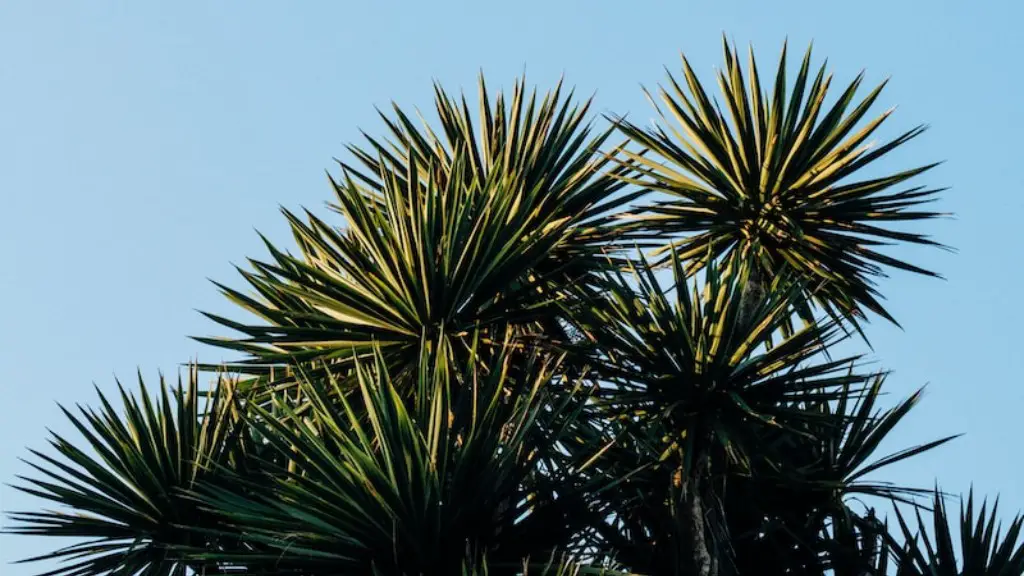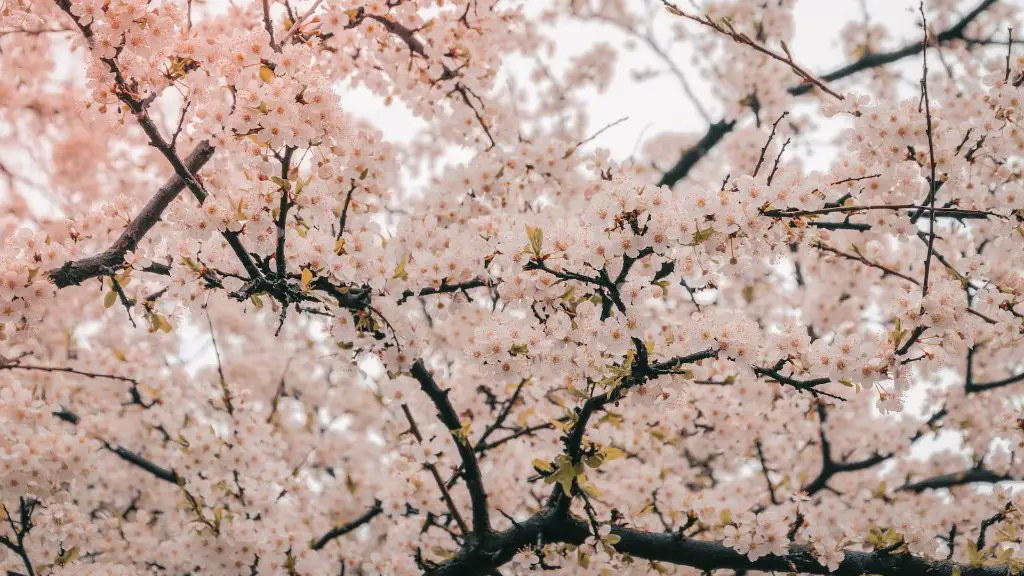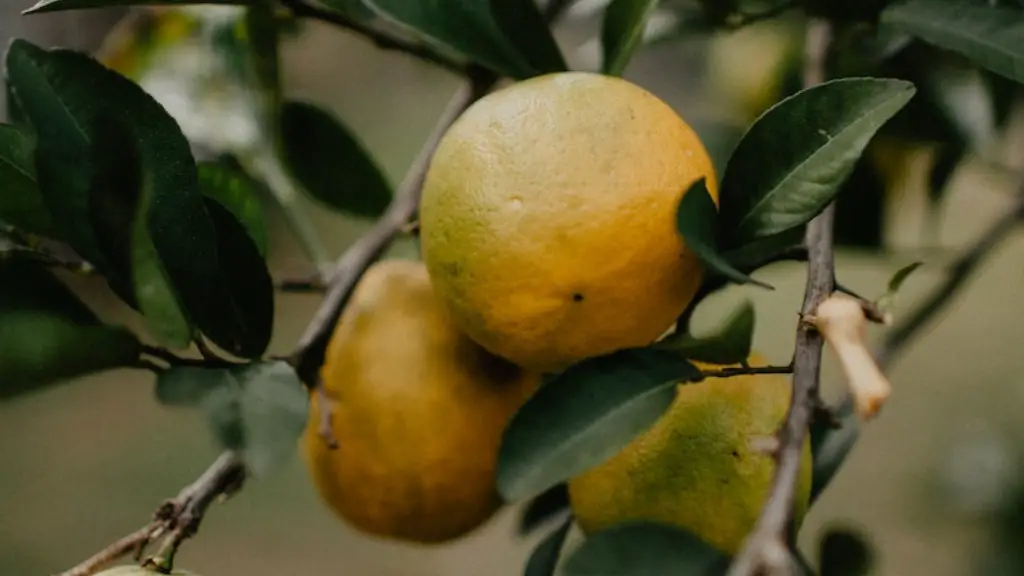Do you have a palm tree with yellowing leaves or brown spots? If so, it’s likely suffering from a fungal disease. While it’s important to treat Palm Tree Fungus as soon as possible, the good news is that it can be treated relatively easily. In this article, we’ll give you a step-by-step guide on how to treat Palm Tree Fungus, as well as how to prevent it from coming back.
To treat palm tree fungus, you’ll need to removed the infected leaves and sterilize any wounds on the tree. You can make a fungicide at home by mixing 1 part milk to 9 parts water, or use a commercial fungicide. Be sure to apply the fungicide to the palm tree every 7 to 10 days until the fungus is gone.
What kills palm tree fungus?
Leaf spots can be unsightly, but they usually don’t kill the tree. If the damage becomes severe, you can use a fungicide containing copper. If you’re using the palm fruits for food, copper fungicides are the only approved option.
Fusarium wilt is a fungal infection that affects palm trees. The fungus enters through the roots and travels up the trunk, eventually killing the tree. Look for wilting leaves, yellowing leaves, and brown streaks. There is no cure for fusarium wilt, so infected trees must be removed and destroyed.
What causes fungus in palm trees
Fusarium oxysporum is a soil fungus that causes fusarium wilt, the most common fungal infection afflicting palms. The fungal spores enter the plants and trees through the roots with water into stems and leaves, and colonize the water-conducting vessels of the plant.
Lichens are not harmful, and are actually a good sign. They are an epiphyte – a symbiotic relationship between an algae and a fungus. Lichens use the tree or palm trunk as a support.
Can a tree with fungus be saved?
Fungal diseases are some of the most difficult diseases to manage in trees. Many times, the only way to manage these diseases is to remove the tree and chemically treat the area. However, in some cases, pruning of infected areas and fungicide treatments can be effective in saving the tree.
Fungus can be a big problem for trees, causing them to become weak and sick. However, you can’t simply “cure” a tree of fungus – you need to get the fungus to go into remission. This can be done by taking care of the tree and making sure it is healthy, as well as by treating the fungus itself. With proper care, your tree can return to health and vigor.
What removes fungus from trees?
If you wish to eliminate most lichen species from a tree, you can mix 6 tablespoons of liquid copper sulfate with 1 gallon of water and apply it during the tree’s dormant season. When applying this mixture, be sure to cover the lichen to the point of runoff.
Liquid Copper Fungicide Spray is an important tool in preventing and treating diseases in a wide variety of trees. It effectively controls diseases such as anthracnose, bacterial leaf spot, fireblight, and botrytis, among many others.
What is a homemade fungicide for palm trees
One a good method to start treating common houseplant pests is to make a mixture of mild liquid soap and water, adding just a teaspoon of bicarbonate of soda to the solution. This will act as a great fungicide.
If you see any fungal growth on your plants, don’t panic! While it may not be pleasant to look at, most fungal diseases are not fatal to plants and can be treated. With a little care, your plants should make a full recovery.
How do you get rid of green fungus on tree bark?
Copper-sulfate is a fungalicide and should be sprayed on lichens on trees in late spring through early fall for best results. Lime sulfur can also be used to remove tree lichens.
Fungi are often a sign that a tree is decaying or dying because they feed on organic matter. If you see fungi growing on a tree, it’s a good idea to have the tree checked out by a professional to see if it needs to be removed.
What is a natural remedy for tree fungus
Apple cider vinegar is a great fungicide for plants. To make a fungicide out of it, mix one tablespoon of vinegar with a gallon of water. Shake this well and add it to a spray bottle. The vinegar mixture can treat most fungal infections on any plant, without causing any harm.
This is good to know, as it means that we don’t have to worry about tree fungi affecting our health. However, we should still be careful around weak or dying trees, as they can pose a safety hazard.
When should I treat my tree for fungus?
Treating for a fungus problem in early spring, before bud break, is usually the best time to do so. This is because if you have noted damage done in previous years, your trees may need treated before the visual signs of fungus appear in spring or summer again. Following up as needed is also important to prevent any further damage.
If you are suffering from Athlete’s Foot, it is important to treat the infection both topically and internally. Apply an anti-fungal cream to the affected area twice a day, and take an oral medication prescribed by your doctor. With proper treatment, the fungus should clear up within a few weeks.
Conclusion
To treat a palm tree with fungus, you will need to remove the affected leaves and dispose of them. You can also treat the tree with a fungicide to help prevent the fungus from spreading.
Fungus can be a difficult problem to treat in palm trees, but it is important to take action as soon as possible to avoid further damage. Fungicides are the most common treatment, but you should consult with a professional to determine the best course of action for your particular tree. In addition to fungicides, you should also take measures to improve the drainage around your palm tree and to reduce the amount of moisture that it is exposed to.




